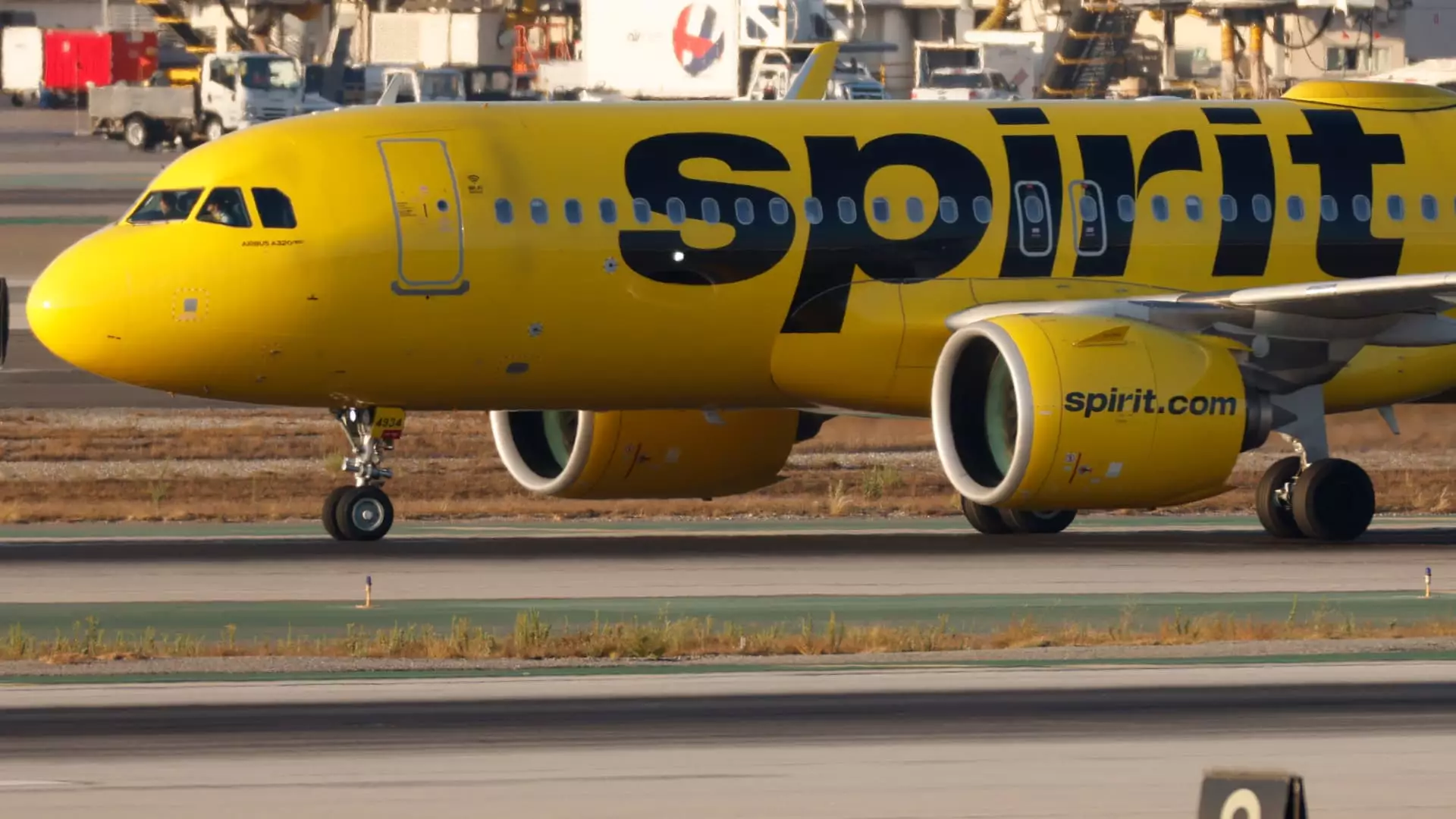After enduring a tumultuous journey through bankruptcy, Spirit Airlines has emerged from the ashes, seemingly ready to redefine its competitive edge in the airline market. Under the leadership of CEO Ted Christie, the airline has shed its burdens, reportedly becoming leaner and more focused. This is a bold assertion, especially considering the rising competition from legacy carriers like Southwest Airlines. The airline’s revival is steeped in dramatic strategic moves that warrant scrutiny, especially in how they exploit the operational changes at Southwest.
Southwest’s Game-Changing Fees
In what can only be described as a seismic shift, Southwest Airlines has finally succumbed to the same corporate trepidation that has long plagued other carriers: the need for additional revenue through fees. For nearly five decades, Southwest built its reputation upon a model that included two free checked bags—a hallmark of customer-friendly service in a very cutthroat industry. Their recent announcement to implement charges for checked baggage signals a departure from this long-standing ethos. If Spirit Airlines is to capitalize on this indisputable blunder from Southwest, it needs to tread carefully. A shift in customer sentiment may invite opportunities, but maladaptive responses risk alienating travelers who cherish budget-friendly values above all else.
The Spirit Offers in a Changing Landscape
Spirit’s strategy has historically thrived on an a la carte pricing model, with fees piling up for every service—from seat selections to checked luggage. As Southwest steps away from its free-bag policy, can Spirit really transform the new competition into customers? According to Christie, the door is now ajar for customers disenchanted with Southwest’s new structure. Subsequently, it seems Spirit may be well positioned to cater to a demographic that has previously gravitated towards the “no-hassle” experience Southwest marketed for decades. However, it’s essential to consider if these potential switchers will truly embrace Spirit’s bare-bones approach over Southwest’s updated model of low-cost flying—even if it’s now come with added fees.
Brand Perception and Market Dynamics
Spirit is smaller than Southwest and has faced a barrage of challenges that have weighed down its public perception. With a reported loss exceeding $1.2 billion last year, stemming from various operational woes and a halting acquisition attempt by JetBlue, Spirit must not only rebuild its financial health but also present a compelling brand to attract a new customer base. However, the legalities and consequences of reduced debt levels juxtaposed with unproven service can often lead to significant reputational issues. Will consumers choose to trust a budget airline burdened with such an extensive history of losses? Or will the pressure compounding from rivals like Delta—who recognize Southwest’s vulnerabilities—ultimately harm Spirit’s fragile recovery?
Consumer Loyalty: A Double-Edged Sword
Consumer loyalty in the airline industry is notoriously fickle. With Southwest’s historic brand image of reliability now intertwined with baggage fees, Spirit must consider how to effectively woo former loyalists. The very soul of Spirit Airlines has thrived on no-frills offerings, but the consumer’s mindset is shifting as cost-competitiveness becomes the new buzzword. If Spirit can capture the attention of disillusioned travelers searching for a balance between cost and value, it may achieve a surprising resurgence. However, there’s a fine line between attracting new customers and alienating the existing core, particularly those who’ve had negative experiences associated with Spirit’s reputation.
Future Possibilities for Spirit Airlines
While it’s easy to bask in the glory of emerging from bankruptcy, Spirit Airlines still faces an uphill battle. The decision to reject potential mergers and focus on its stabilization strategy could prove wise, but time will tell if that choice is the right one. More than ever, the question of whether Spirit can revitalize its operations for sustainable profitability hangs in the air. The recent restructuring, which alleviated some financial burdens, might grant Spirit an opportunity to redefine its service and value proposition in a crowded market. Success is not guaranteed, and as the competitive landscape evolves, only effective strategic maneuvers will secure Spirit Airlines a lasting position within the industry’s ever-changing landscape.

